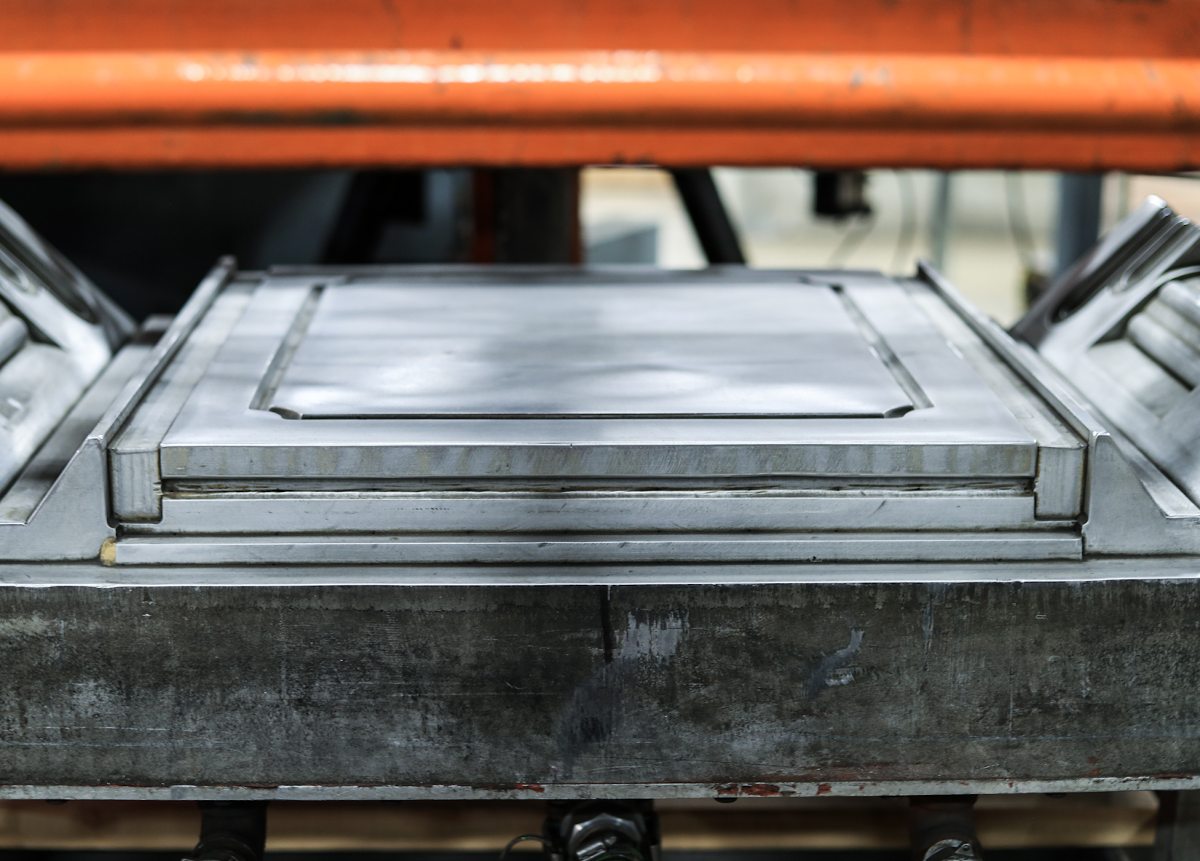Vacuum forming is a popular manufacturing technique that involves heating thermoplastic sheeting and stretching it over or into a mold using vacuum pressure.
The process is commonly used to create lightweight three-dimensional objects, including trays, packaging containers, and automotive parts, to name just a few.
Molds, also called tools, are an essential component of vacuum forming, as they determine the finished part’s size, shape, and texture.
In this blog, we’ll take a closer look at the different types of molds used in vacuum forming, discussing their durability, cost, impact on a part’s quality, and more.
Male & Female Molds

Male and female molds are most commonly used in vacuum forming.
They can be made from a variety of materials, including aluminum, steel, and composite materials, such as fiberglass and wood.
A female mold is one in which the plastic sheeting is placed on top of it, and vacuum pressure is applied from below to draw the material down into the contours of the tool.
Typically, a female mold will have a recessed, flat base with a three-dimensional shape in the opposite direction of the desired part.
In contrast, a male mold is one in which the plastic sheet is placed beneath it, and vacuum pressure is applied from above to pull the material down onto the surface of the tool.
Male molds are used when the part being produced has a simple, basic shape.
Often made from a single piece of material that can be quickly cut and shaped, male tools are less costly than their female counterparts.
Below is a side-by-side comparison of the features and capabilities of both mold types:
| Female | Male |
| Negative Form | Positive Form |
| Ideal for deeper parts | Ideal for shallow parts |
| Can utilize a plug assist | Requires a vac box |
| Produces thicker sidewalls | Produces thinner sidewalls |
| Consistent output | May cause ridges at cooling line |
Three-Dimensional Print Molds

In recent years, three-dimensional printing has become an increasingly popular option for tooling, as the innovative technology allows for complex designs to be produced quickly and accurately.
Leading thermoforming manufacturers, including Greenwood Plastics Industries, utilize CAD (Computer-Aided Design) software to generate a computer model of a mold that is customized to a specific part’s dimensions and contours.
Engineers are able to create intricate, detailed designs that would be difficult to achieve using traditional methods.
Modifications can be made before the file is sent to the printer and the physical tool is produced.
While there are challenges associated with three-dimensional printing, such as ensuring the molds are strong enough to withstand the thermoforming process, the benefits far outweigh the challenges.
Materials
Different materials are used for vacuum forming molds, each with unique properties that affect their durability and performance.
Polymer

Polymer molds are widely used because of their low cost and excellent thermal stability.
Lifespans heavily depend on the specific type and grade of the material used in construction.
Plastic tooling can be made from high-density polyethylene (HDPE), acetal, and polypropylene, to name a few.
High-density polyethylene (HDPE) is a preferred choice because of its tolerance to high-temperatures, chemical resistance, and low quantities of friction.
Polymer molds generally allow for ease of machining and can withstand multiple production cycles without showing any signs of wear and tear.
A downside is they do not have an internal cooling feature, which equates to slow cycle times.
Wood

Wooden molds are very cost-effective and relatively easy to produce, making them a popular choice for small-scale manufacturing as well as prototyping.
Hardwoods such as oak and maple are generally preferred to maximize a part’s quality and ensure a successful job.
One of the advantages of wood tools is they can be machined to create intricate shapes and textures, which can be transferred to the final part.
The biggest disadvantage is they are difficult to maintain and require periodic sanding or refinishing.
They are also prone to warping and cracking, particularly if subjected to moisture or temperature changes.
Water-cooled Aluminum

Water-cooled tools have built-in channels that circulate cool water through the mold to prevent it from overheating.
One of the main benefits they offer is the ability to withstand thousands of cycles without showing any signs of wear or deformation.
This results in lower per-part costs and faster production times, both essential to producing large quantities of parts in a short amount of time.
Another benefit is the aluminum used in construction is smooth and non-porous, resulting in parts that have an even, consistent surface finish.
A nice finish is especially important for parts that require a high level of visual appeal, such as those used in the transportation and consumer electronics industries.
The downside of aluminum tooling is it requires a lot of material and is labor intensive to construct, making them expensive to manufacture.
And because of the high cost, a wood prototype is often run first to perfect the design.
Non-cooled Aluminum
As its name suggests, non-cooled aluminum tools are not actively cooled during the forming stage.
They are much less expensive than cooled molds since they do not require any additional equipment or infrastructure.
Additionally, non-cooled aluminum molds are easier to manufacture and maintain, which reduces costs.
However, the quality of a completed part’s finish may be subpar, making it not ideal for certain applications.
And because the mold is not actively cooled, there is a greater risk of the plastic sheet warping as it solidifies against the mold.
Conclusion
When considering what type of mold to use for a thermoforming project, manufacturers must carefully evaluate a number of factors based on the size of the job.
Ultimately, the decision of what type of tooling to use largely depends on the specific requirements of the job and the trade-offs between cost, speed, and finish quality.



